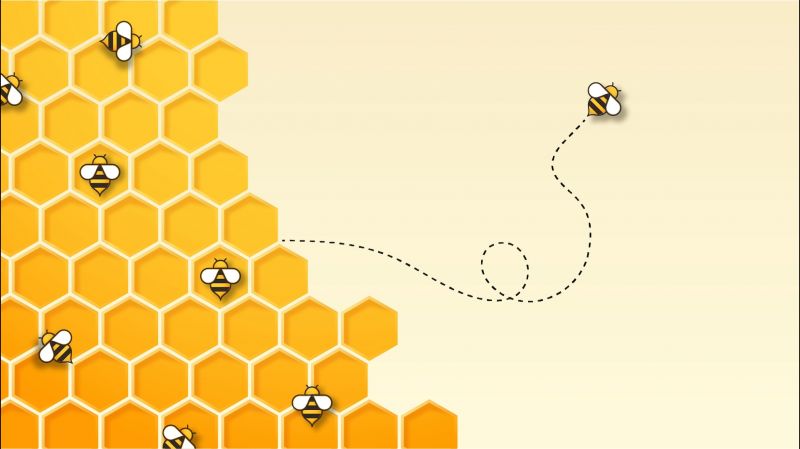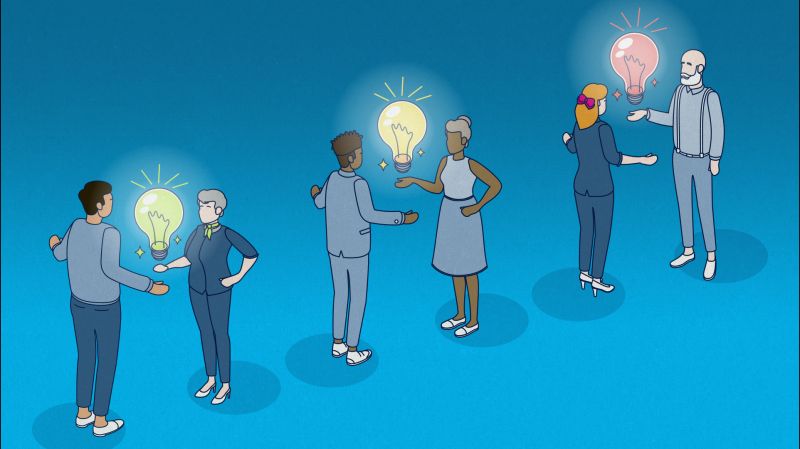Growing the Indigenous Startup Ecosystem
First Nations, Métis and Inuit founders are building more businesses than the Canadian average. But support still lags

In the bustle and buzz of Canada’s startup scene, Indigenous entrepreneurs may be the most dynamic contributors.
Just clock the numbers: First Nations, Métis and Inuit entrepreneurs are creating businesses at five times the rate of non-Indigenous Canadians. They’re younger than average, gender-diverse (Indigenous women are twice as likely as their non-Indigenous counterparts to own businesses), and more than twice as likely to be early adopters of new technology than the norm. The Indigenous economy now contributes more than $56 billion annually to Canada’s GDP, and many experts expect that number to nearly double in the next few years.
Yet for all this momentum, Indigenous entrepreneurs play on an uneven field. Indigenous-run businesses, proportionately, receive only a small fraction of the funding awarded to companies run by other Canadians; they also trail in available cash flow. Many Indigenous entrepreneurs struggle to access education, training, mentorship and peer networks — the scaffolding of launching and growing a successful business. And while there are more programs and grants available to advance Indigenous entrepreneurship than in the past, these can be prohibitively hard to find, complicated to join and burdensome to administer — especially for resource-strapped startups.
Fortunately, there are people like Ashley Richard, MMIE'21, working to address the disconnect.
Richard, who is of Métis and Ojibway heritage, is a consultant who specializes in strategy and programming that advances Indigenous economic empowerment. Her knowledge of the Indigenous entrepreneurial ecosystem is broad and deep.
She was the author of Mikwam Makwa Ikwe (Ice Bear Woman), a landmark 2021 report commissioned by the Women Entrepreneurship Knowledge Hub and the University of Manitoba’s Asper School of Business that identified gaps facing Indigenous women entrepreneurs and detailed a set of recommendations to fill them. She’s also the new director of Indigenous entrepreneurship at the University of Waterloo’s United College.
Richard is, herself, an Indigenous entrepreneur, both by experience and by education (she is a graduate of the Master of Management Innovation & Entrepreneurship program at Smith School of Business). As she puts it: “What excites me most is being able to create change with other organizations who are really passionate about the movement.”
Smith Business Insight contributor Deborah Aarts spoke with Richard about how Indigenous entrepreneurs are forging their paths — and what the broader business community can do to better support their efforts.
Let’s start with the lay of the land: How would you characterize the state of Indigenous entrepreneurship in Canada today?
I think that Indigenous entrepreneurs are a little impatient — and not in a bad way. They’re eager to build businesses, and they want to be able to do so in a way that works for them.
Are there any specific Indigenous entrepreneurs you think exemplify this energy?
We’re seeing so many Indigenous entrepreneurs scaling up in a huge way. We have Patrice Mousseau, whose company, Satya Organics, makes products that are FDA-approved everywhere now. We talk about Cheekbone Beauty founder Jenn Harper a lot — and for good reason. How many Indigenous women have their own makeup brands sold at Sephora, the biggest cosmetics retailer in Canada? And then there are the Bobbie Racettes of the world, who are scaling up in a serious way—in Bobbie’s case, with Virtual Gurus. These are big, booming, successful businesses that have seen exponential growth.
But it’s equally important to realize that growth like that is not every individual Indigenous entrepreneur’s goal. We don’t all want to be the next big thing. Some people just want to be really good at what they do and enjoy their work and provide for their families.

What does that look like?
An example I really like is Bloom + Brilliance, a branding and design company founded by Janelle Desrosiers, who is Métis from Manitoba. Janelle is really strong about her boundaries — not only her own personal boundaries but also boundaries for how fast she wants her business to grow. She got to a point where she realized, “Oh, this is huge.” She was so busy and had so many staff to manage, she was burnt out all the time and felt she’d lost sight of why she was doing what she was doing. So, she really scaled back and figured out how to focus on what she really wanted to do.
Why are stories like that important to tell?
We should showcase not only stories of success but also stories about when things didn’t go according to plan, because that allows us to show how Indigenous entrepreneurs bounce back, come back or change paths.
Telling these stories makes entrepreneurship seem more accessible and not so scary. The message shouldn’t be, “If you don’t get your stuff in every Sephora in North America, you’re not successful.” It should be, “There are so many different tracks available to you as an Indigenous entrepreneur, and you can’t be behind in your own life.”
Let’s zoom out and talk about the broader entrepreneurial ecosystem. Are Indigenous businesses getting the support they need?
Different people have different thoughts on it, but I do think it’s an area of focus for a lot more people than it was 10 years ago. Communities, institutions and organizations really are starting to understand — and see the value of — Indigenous entrepreneurship. They’re trying to foster it and support it in the work that they’re doing. And they’re starting to do it in a more effective way.
I especially see this shift in organizations like incubators and accelerators. There was a point at which they weren’t seeing many Indigenous entrepreneurs making use of their resources, and their reaction tended to be along the lines of “Why not? Our doors are open!” Now, I see these organizations making really intentional and concerted efforts to reach out to Indigenous entrepreneurs. They’re educating themselves and removing the barriers they have within their organizations to better meet the needs of this growing population. All that said, there’s room for improvement.
Where is more progress needed?
I’d like to see a support ecosystem with reduced barriers to understanding about who is doing what and where. All organizations have their own strengths, and no one can be the best at doing everything for Indigenous entrepreneurs. If we all had a greater understanding of what we each bring to the table, we’d be better able to create a funnel system that supports and nurtures Indigenous entrepreneurs across Canada — whatever their stage, their need or where they want to go. And, of course, it’d be great if there was endless money.
That’s a great segue to talk about money. When we spoke a few years back for a Smith Magazine feature on the funding gap facing underrepresented entrepreneurs, you referenced the need to simplify and streamline financing processes, which can be needlessly complicated and difficult for many Indigenous entrepreneurs to access. Have things improved?
Not exponentially. I haven’t noticed any grandiose changes in terms of access to capital for Indigenous entrepreneurs — that is, as it relates to actually getting money in our pockets. We still need to make it easier for people to know where to look or where to go for funding. And change isn’t happening fast enough.
But I don’t want to say things have stayed the same, either. I have seen some encouraging models of organizations supporting entrepreneurs in different ways.
Can you share a few examples?
I’d point to the Indigenous Women’s Entrepreneur Program of the National Aboriginal Capital Corporations Association (NACCA), which has a specific focus on helping Indigenous financial institutions across the country provide better support to Indigenous women entrepreneurs. Because NACCA provides funding for that program across Canada, many of those financial institutions are able to support Indigenous women entrepreneurs who they might not have otherwise served. It’s a focused effort, and it makes a difference.
We’re also seeing growing interest among Indigenous entrepreneurs in micro-grants. There’s a better understanding that not everyone needs, say, $250,000 to get their business off the ground. Take something like the Pow Wow Pitch. That program has grown exponentially in the past four or five years. Similarly, the Canadian Council for Indigenous Business has had a lot of success with its micro-grants program for Indigenous women entrepreneurs.
We’re also doing a better job of identifying what works in different regions and supporting that in new ways. For example, I really like the way EntrepreNorth does things. They’ve found a niche in empowering Indigenous entrepreneurs in Northern Canada to grow, while advancing social change and prosperity in their communities. I’ve been to a few of their events, and I’ve met with some of the entrepreneurs that have gone through their program, and it’s just been life-changing for them.
It’s really great to see people leaning into effective models like these, because we already know what hasn’t been effective.
Let’s expand on that. What hasn’t been working?
If you boil it down, we see that taking a transactional approach when financing Indigenous businesses doesn’t work as well as taking a more relational approach.
For example, if I were a lender lending to an Indigenous entrepreneur, I wouldn’t necessarily be looking at the five Cs of credit to determine whether I think their business is feasible. I might apply different criteria, like the five Rs of rematriation, an alternative investing framework developed by Native Women Lead in the U.S., wherein an applicant’s eligibility to get a loan is based on the lending organization’s relationship to and understanding of that person, their motivations and their business goals.

Beyond funding, what are some things non-Indigenous business leaders — perhaps, people reading this article — can do to better support Indigenous entrepreneurs?
Let’s start with something relatively easy: You can start by procuring more things from Indigenous-owned businesses. Say you’re running a hotel chain. You need things to hang on your walls and to put in your bathrooms, right? What if you decided to put Indigenous art or Indigenous soaps and shampoos in all your hotels across the country? You’d get something you need while also directly supporting Indigenous businesses. That’s a simple decision that can have a huge impact.
Something more challenging — that, frankly, takes a lot more work — is to identify leaders or changemakers within your organization who want to do the meaningful work of shifting how you participate in the Truth and Reconciliation Commission of Canada’s 94 Calls to Action, especially Call to Action 92, which focuses on the role of businesses. They were written in such a way as to apply to everyone. So, no matter what sector you operate in or type of organization you work in, that’s a great place to start.
From there, I’d recommend you look to the 2022 National Indigenous Economic Strategy, which articulates five specific calls to economic prosperity that would equip Indigenous entrepreneurs with information, tools, capital and supports, to see how you or your organization might be able to help.
And you can engage with Indigenous communities or Indigenous leadership to create a strategy of what your organization can do to advance reconciliation. That strategy is going to be completely different for every organization because everyone’s going to have their own sets of relationships that they’re working towards.
In other words, it’s not something you should expect to resolve just by issuing a press release or attending a training session.
You do need to recognize that this takes time. If you’re thinking in, say, a six-month timeline, sure, you can do something like decide to buy Indigenous soaps. But in terms of long-term change, you have to really invest that time in those relationships.
At the risk of ending with a very basic question: Why is it so important that we get this right?
Well, to give the most basic answer: there’s a lot of money on the table. In 2016, the National Indigenous Economic Development Board issued a monumental report in which the authors found that closing the socioeconomic gaps between Canada’s Indigenous and non-Indigenous populations would add $27.7 billion annually to our national GDP. There’s a strong business case for this. It’s already been made.
Beyond that, many Indigenous entrepreneurs are promoting cultural revitalization through their businesses, whether it’s by incorporating traditional knowledge, or wanting to support their communities through better business practices, or by adopting social enterprise models. Just by supporting these different businesses, you’re also supporting their larger social missions. There’s more to this than dollars and cents.





